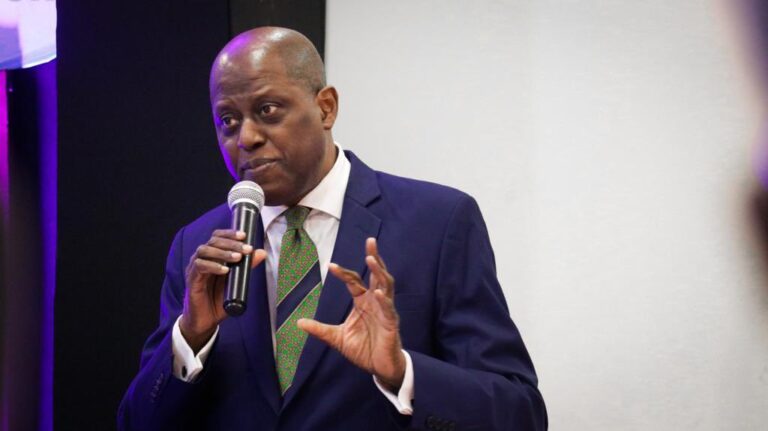The Monetary Policy Committee (MPC) of the Central Bank of Nigeria (CBN) is expected to hold its penultimate meeting of the year on the 25th and 26th of September. Like the previous meetings, we expect the Committee to consider developments in the global and domestic economy since the last policy meeting. On the global scene, systemic central banks are signalling a peak in their interest rate hiking cycles while still keeping the option of additional rate hikes open if inflation surprises to the upside. In the domestic economy, headline inflation maintained its upward trajectory due to the lingering adverse impact of PMS subsidy and FX reforms amidst existing challenges limiting food supply. Additionally, local currency pressures remain intact, and the non-oil sector may slow further in Q3-23 amid the near-term negative spillovers of lingering economic reforms. Overall, our baseline expectation is for the MPC to increase the MPR further by 25bps while retaining other policy parameters.
Domestic Growth Improved in Q2-23 but Capped by Weaker Oil Sector
As we envisaged, the domestic economy maintained its growth trajectory as real GDP grew by 2.51% y/y in Q2-23 (Q1-23: 2.31% y/y). Decomposing the breakdown provided, we highlight that the oil sector contracted further by 13.43% y/y (Q1-23: -4.21% y/y) given lower crude oil production (1.22mb/d vs Q1-23: 1.51mb/d | Q2-22: 1.43mb/d) influenced by (1) strike-induced shut down of oil platforms and (2) Exxon Mobil’s declaration of force majeure, particularly at the Qua Iboe oil terminal in April. Meanwhile, the non-oil sector’s growth was higher, settling at 3.58% y/y in Q2-23 (Q1-23: +2.77% y/y) as the negative impact of the cash scarcity witnessed in Q1-23 subsided. Thus, the Finance and insurance, Trade, Agriculture, and ICT sub-components primarily drove the non-oil GDP growth in the review period.
Consumer Prices Remain Biased to the Upside in the Short-term
Consumer prices continue to test new record highs, obviously due to the (1) lingering impacts of currency pressures, (2) high energy costs, and (3) unfavourable base effects from the prior year amidst the existing factors limiting food supplies. Accordingly, the headline inflation increased for the eighth consecutive month, settling higher by 172bps to 25.80% y/y in August (July: 24.08% y/y) – its highest print since August 2005 (+28.21% y/y). On the breakdown provided, we highlight that food prices (+235bps to 29.34% y/y) rose to their highest level in 18 years, while the core inflation rose faster by 67bps to 21.15% y/y.
FX Volatility Remains Intact Despite the CBN’s FX Reforms
Since the last policy meeting in July, local currency pressures have remained intact at the official and unofficial FX markets. We attribute the lingering pressure to the FX liquidity shortage, given that foreign investors have remained on the sidelines, awaiting signals from the CBN to clear the existing FX backlogs and possibly push market interest rates higher. Accordingly, FX demand continues to outstrip supply, with most of the flows trickling into the market from local corporates as against foreign investors. Though the CBN consistently sold FX regularly at the Investors and Exporters Window (IEW), albeit at small volumes on a weekly basis since the FX liberalization (22 June), we understand that the apex bank has remained on the sidelines since the first week of September. Consequently, a wide gap between the parallel market and the official exchange rate has re-emerged, with the naira trading at NGN776.60/USD (as of 19 September) at the IEW.
Global Central Banks on Course to the End of Interest Rate Increases
Minutes from the FOMC’s July policy meeting showed that most members were concerned about upside risks to the inflation outlook, leaving the door open for more tightening. Reiterating such a position, the US Fed chairman, during the Jackson Hole conference on 25 August, expressed the possibility of further interest rate increases should inflation prove more resilient than expected. Nonetheless, the financial markets believe the US Fed may skip further rate hikes over the rest of the year. Indeed, the CME FedWatch tool indicates a 99.0% and 70.9% chance that the Fed will keep rates unchanged at its September and November policy meetings, respectively. Irrespective, we think the two most plausible scenarios could be that the November meeting brings the end of rate hikes or one more increase. Elsewhere, when the European Central Bank (ECB) raised its three key rates further by 25bps at its recently held September policy meeting, the Governing Council considered that the key ECB interest rates have reached levels that, if maintained for a sufficiently long duration, will substantially contribute to the timely return of inflation to the target. In our view, this change in tone suggests that the ECB may have reached the end of its interest rate hiking cycle. That said, we understand that the ECB President did not outrightly rule out a further rate hike at the post-meeting conference, stating that interest rates would have to remain at restrictive levels for some time. Away to England, the Bank of England (BoE) is expected to increase the Bank Rate by 25bps to 5.50% at its next policy meeting on 21 September in line with its forward guidance. Given that the suggested path for the Bank Rate is an average of 5.50%, we suspect the BoE is near the end of its interest rate tightening cycle.
MPC Likely to Raise the MPR Further by 25bps but Sound More Hawkish
Although the voting patterns and CBN’s tone from the last meeting suggest that the Committee might be tempted to keep rates steady at this meeting, we think the dynamics have changed as inflationary pressures have intensified, given the lagging impact of the current administration’s reforms. Besides, the core inflation (+67bps to 21.15% y/y) settling at a record high also implies that demand-side factors are stoking price pressures as much as supply-side factors, thus providing further reason to maintain a tight monetary policy stance. Notably, we spotlight the expansion in monetary aggregates, with the broad money supply increasing by 25.5% year-to-date (as of the end of July). Thus, we believe the MPC will continue to use a combination of interest rate increases and liquidity tightening to anchor medium-term inflation expectations, more so that price pressures remain biased to the upside over the rest of the year. Conclusively, our baseline expectation is for the MPC to (1) raise the MPR further by 25bps, (2) remove the NGN2.00 billion limit on the Standing Deposit Facility (SDF), and (3) retain other policy parameters.








